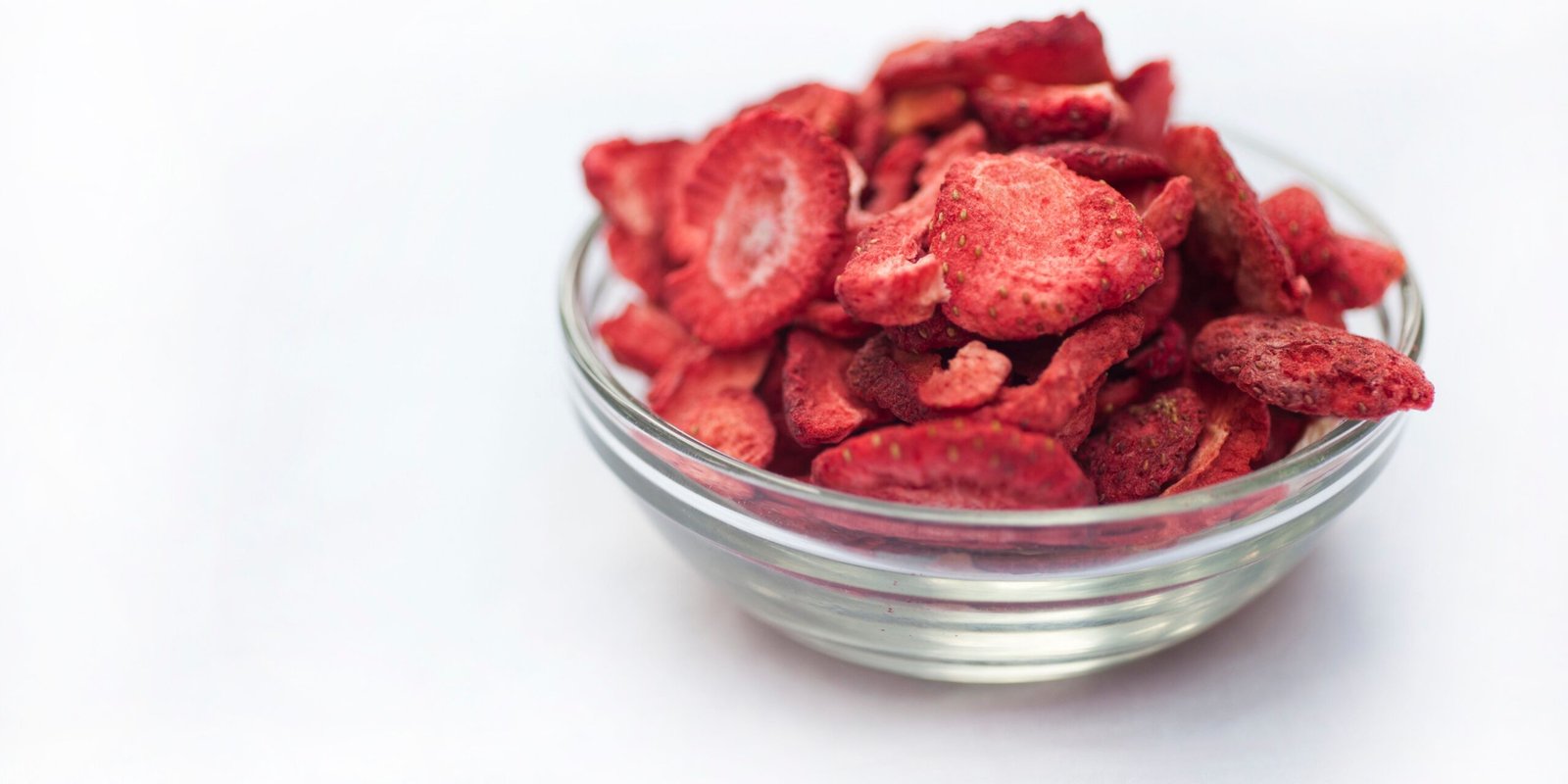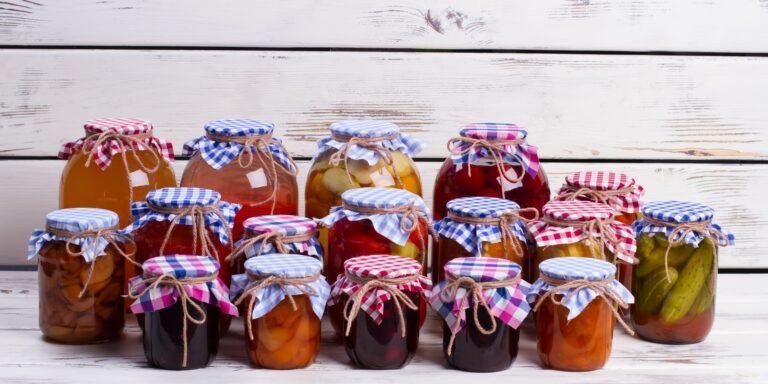3 Tips To Store Freeze Dried Food So It Lasts Long Term
This post may contain affiliate links, full disclosure here.
If you know how to correctly store freeze-dried food, you can keep it for up to 25 years! However, how well you store it is totally dependent on how well you store it. Freeze-dried foods are the next craze, and they may even become a way of life. We’ll go through freeze-dried food and how to store it properly in order to help you.
How Freeze Dried Food Is Made
Freeze drying is a method of preserving food that inhibits the growth of microorganisms. It also helps you lose a lot of weight.
This is performed by removing the moisture from the meal and leaving only about 0.5 percent to 3% of moisture when the entire procedure is completed. Lyophilization is another name for this process.
While the food is frozen at a very low temperature, it is also frozen at a very precise temperature. The triple point is a term used to describe this situation. At this low temperature, the moisture in the food can transition straight from a solid-state, ice, to a gas state, without ever converting to liquid in the process.
This procedure necessitates a delicate balancing act of cooling, heating, and tightly controlled atmospheric pressures. Foods that are freeze-dried are often dried twice before being packed for sale.
How to Keep Freeze-Dried Food Safe
As previously stated, depending on how freeze-dried meals are stored, they can last up to a quarter-century. So, here are some helpful hints to help you understand the preservation process so that they stay fresh anytime you need to eat them.
Making Certain It’s Completely Dry
The use of a freeze drier is required for this procedure. Take a large chunk of the meal out of the freeze drier and cut it in half to check for any ice particles in the centre.
Alternatively, you can feel the food to see if it’s hot or cold. If the food isn’t cold, it’s probably dry.
The freeze-drying process starts on the outside of the food and works its way inward. If the food still has ice particles or is cold in the middle, it should be returned to the freeze drier for a quick dry cycle. Thankfully, using a freeze dryer makes the process a lot easier.
Sealing It
After you’ve freeze-dried your food, it’s necessary to store it correctly, or it’ll start to absorb all of the moisture from the air and rot. Here are some suggestions for preserving freeze-dried meals properly.
Bags made of mylar
Mylar bags are the finest storage solution if you’re serious about keeping your food for up to 25 years. These are the simplest to use and are also the most cost-effective.
The oxygen absorber will need to be added. Ensure that the bag does not contain any oxygen, as this will cause the food to spoil over time. The bag must next be sealed using a flat iron, a hot iron, or an impulse sealer.
10 Cans
#10 cans are also thought to be an excellent way of storing freeze-dried meals. They do, however, require a can sealer, which is an additional cost.
Plastic that has been vacuum-sealed
Except for meats and other high-protein foods, vacuum-sealed plastic bags work great for most products. If you don’t plan on eating the food right away, a reusable container or jar will suffice. Remember to add an oxygen absorber to any meat or food that will be stored for a long time.
Jars
Simple airtight jars can be used to store foods like yoghurt, fruits, vegetables, ice cream, and cheesecakes. They can also be easily preserved in a pantry for a couple of months, even without refrigeration.
Products That Can Help
Vacuum Sealer
Because oxygen is one of the enemies of food preservation and is found everywhere, a vacuum packing machine can become your secret weapon. Before sealing cans, jars, bags, or buckets, use vacuum packing equipment to eliminate surplus air. It’s a great way to keep your food fresh. The main disadvantage is that they do not exhaust all of the oxygen, and the packaging is usually clear plastic. This plastic allows both water and oxygen to travel through it. So they’re perfect for medium-term storage (two to three years).
Oxygen Absorbers
These adorable little ones are a must-have. putting an oxygen absorber into a mylar bag Adding a handful of these devices to your food will make a huge difference in the longevity of your preserves, regardless of your preferred packaging method.
The Best Storage Situations
As previously stated, microbial development is the cause of spoilage in freeze-dried foods or any food for that matter. As a result, if you want your food to last as long as possible, you should try to prevent its growth as much as possible.
We’ll give you some pointers on how to store your freeze-dried foods in the best possible circumstances so that they stay fresh for longer.
Light
Continuing on from the previous point can do a good job of effectively blocking almost 100% of the light. However, depending on their thickness, Mylar bags can block out varying degrees of light.
Mils are used to measure the thickness of the Mylar bag. The bag will be thicker if the mils are higher. As a result, regardless of how you store your food, keeping it in a dark spot will ensure that it lasts longer.
Temperature
Food that is kept as cool as possible has a longer shelf life. It’s also worth noting that temperature fluctuations should be kept to a bare minimum.
Select a room in your home that is typically dark and devoid of windows. The ideal places to store these foods are often a cellar, basement, or closet because they have consistent temperatures.
Oxygen
The only effective approach to prevent oxygen from entering the freeze-dried food is to keep the can or packaging sealed. Maintain a safe distance between your food and any rodents or other critters that might destroy the packing.
Moisture
We’d like to emphasise once more the importance of not allowing any moisture to come into touch with the food. The entire process of freeze-drying food entails removing nearly all of the moisture. It’s only natural to keep dampness at bay.
Bottom Line How to Properly Store Freeze Dried Food
As you can see, understanding how to store freeze-dried food isn’t difficult. The most important thing to remember is to keep it cool and dark to extend its shelf life.


![Best Emergency Food Bars For Your Survival Pantry [That Don’t Taste Too Bad]](https://preparinginthecity.com/wp-content/uploads/2021/09/Best-Emergency-Food-Bars-for-Your-Survival-Pantry-768x384.jpg)




